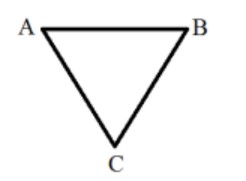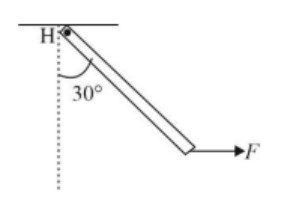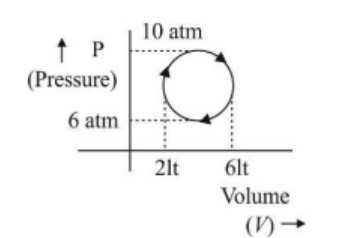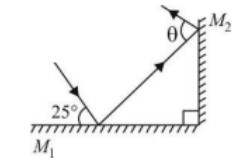Physics
Get insights from 5.6k questions on Physics, answered by students, alumni, and experts. You may also ask and answer any question you like about Physics
Follow Ask QuestionQuestions
Discussions
Active Users
Followers
New answer posted
2 months agoContributor-Level 10
Using parallel axis theorem for the side BC, the moment of inertia of the triangle about an axis passing through A and perpendicular to the plane of the triangle,
I? = 2 [ (1/3)ma²] + [ (1/12)ma² + m (√3a/2)²] = (3/2)ma²
If the angular velocity of the triangle at any instant is ω, the velocity of the vertex B at that instant is aω
Therefore, the velocity of B is maximum at the instant the angular velocity is maximum, i.e. when the side BC becomes horizontal
Let the angular velocity at this instant be ω?
Then, by conservation of energy
Gain in kinetic energy = Loss in potential energy
(1/2)I? ω²? = 3mg (Loss in height of CM of tr
New answer posted
2 months agoContributor-Level 10
Centripetal acceleration is provided by friction force. Maximum friction force should be equal to or greater that mv² / R.
µmg = mv²/R ; µ = 100/ (100*10) ; µ = 1/10 ; µ = 0.1
New answer posted
2 months agoContributor-Level 10
Pitch p = 0.5 mm
Device has +ve zero error
R = 6p + 28p/50 - 4p/50 = 6p + 24p/50; 3mm + (24/50) * 0.5 = 3.24 mm
New answer posted
2 months agoContributor-Level 10
In y axis u? = v? a? = -E? q / m
s? = 0, u? t + (1/2)a? t² = 0 ⇒ t = 2u? /a? = 2v? m/E? q
x coordinate at that time = v? * t = (2v? m/0) * v? = (2v? ²m)/E? q
New answer posted
2 months agoContributor-Level 10
Let the origin be at the CM of the particles, let the initial positions of the particles be x = a/2 and x = -a/2 and let the instantaneous positions of the particles be x = r and x = -r
Let the instantaneous velocity of each particle be v
Let the time after which the distance between the particles has reduced to a/2 be T
Then, for the particle that was initially at x = -a/2,
(Gm²/ (2r)²) = -m (vdv/dr) ⇒ (Gm/r²) = - (4vdv/dr) ⇒ -4∫vdv = Gm∫ (dr/r²)
[v is negative because the velocity is towards the –X direction]
dr/dt = -√ (Gm/2) (1/r - 2/a)¹? ²
⇒ ∫ (a/2)^ (a/4) (r/√ (a-2r)dr = -√ (Gm/2a) ∫? dt
⇒ ∫ (a/2)^ (a/4
New answer posted
2 months agoContributor-Level 10
For permanent magnetic Y is good choice, As it has very high coercivity (comparitively)
New answer posted
2 months agoContributor-Level 10
Taking torque at top pt, mg sin30°*L / 2 = F cos30°*L ⇒ F = mg / 2√3
New answer posted
2 months agoNew answer posted
2 months agoContributor-Level 10
The time spent in magnetic field (t) is independent of velocity of charge.
t = (1/4) (2πm/qB)
Taking an Exam? Selecting a College?
Get authentic answers from experts, students and alumni that you won't find anywhere else
Sign Up on ShikshaOn Shiksha, get access to
- 65k Colleges
- 1.2k Exams
- 679k Reviews
- 1800k Answers




